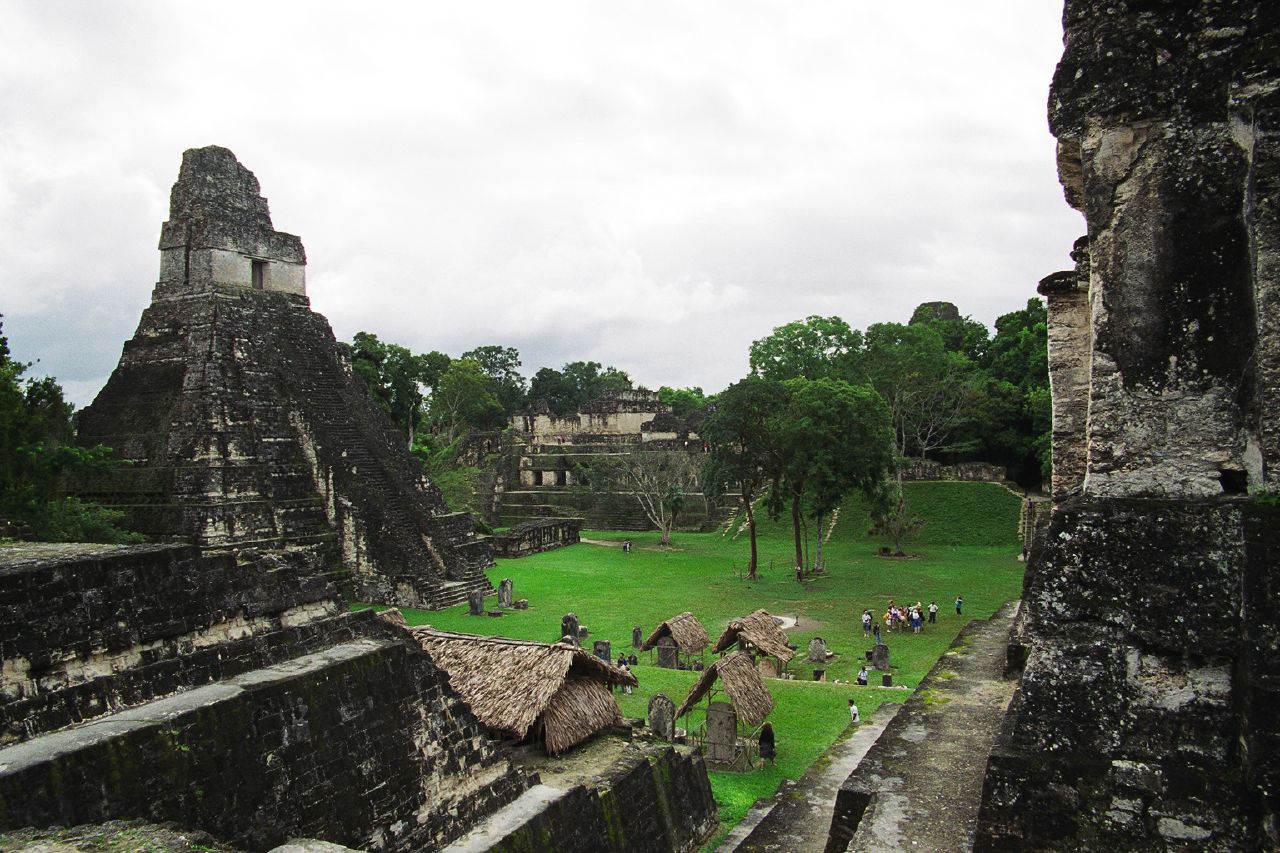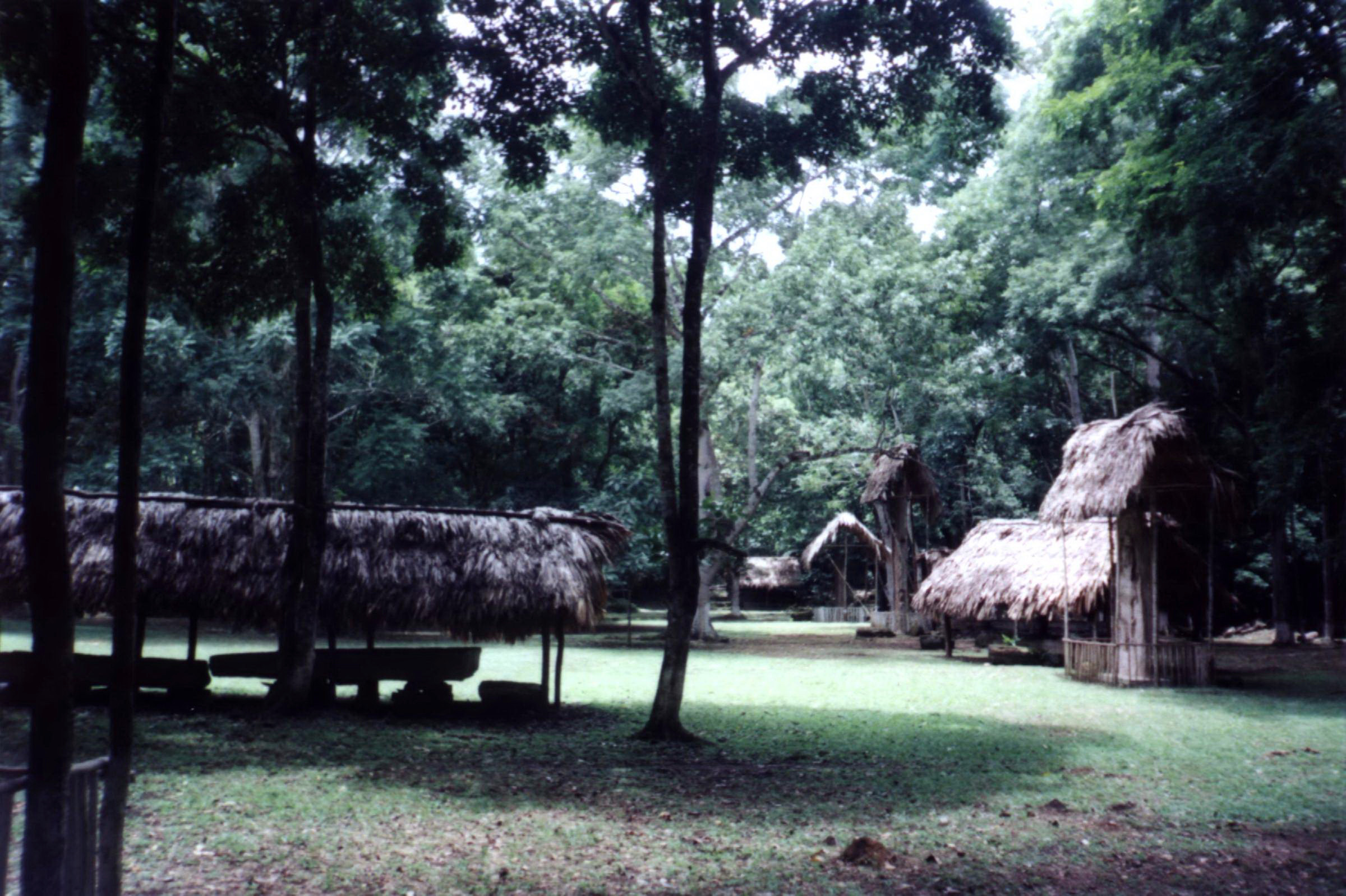|
Tikal Temple1 2006 08 11
Tikal () (''Tik’al'' in modern Mayan orthography) is the ruin of an ancient city, which was likely to have been called Yax Mutal, found in a rainforest in Guatemala. It is one of the largest archeological sites and urban centers of the pre-Columbian Maya civilization. It is located in the archeological region of the Petén Basin in what is now northern Guatemala. Situated in the department of El Petén, the site is part of Guatemala's Tikal National Park and in 1979 it was declared a UNESCO World Heritage Site. Tikal was the capital of a conquest state that became one of the most powerful kingdoms of the ancient Maya. Though monumental architecture at the site dates back as far as the 4th century BC, Tikal reached its apogee during the Classic Period, c. 200 to 900. During this time, the city dominated much of the Maya region politically, economically, and militarily, while interacting with areas throughout Mesoamerica such as the great metropolis of Teotihuacan in the distant ... [...More Info...] [...Related Items...] OR: [Wikipedia] [Google] [Baidu] |
Tikal Temple I
Tikal Temple I is the designation given to one of the major structures at Tikal, one of the largest cities and archaeological sites of the pre-Columbian Maya civilization in Mesoamerica. It is located in the Petén Basin region of northern Guatemala. It also is known as the Temple of the Great Jaguar because of a lintel that represents a king sitting upon a jaguar throne.Muñoz Cosme & Quintana Samayoa 1996, p.302. An alternative name is the Temple of Ah Cacao, after the ruler buried in the temple.''Ah Cacao'' being an earlier nickname for the Tikal ruler Jasaw Chan K'awiil I, whose tomb the temple contains. Temple I is a typically Petén-styled limestone stepped pyramid structure that is dated to approximately 732 AD. Situated at the heart of a World Heritage Site, the temple is surmounted by a characteristic roof comb, a distinctive Maya architectural feature. Building Temple I on the eastern side of the Great Plaza was a significant deviation from the established tradition o ... [...More Info...] [...Related Items...] OR: [Wikipedia] [Google] [Baidu] |
Maya City
Maya cities were the centres of population of the pre-Columbian Maya civilization of Mesoamerica. They served the specialised roles of administration, commerce, manufacturing and religion that characterised ancient cities worldwide.Sharer & Traxler 2006, p.71. Maya cities tended to be more dispersed than cities in other societies, even within Mesoamerica, as a result of adaptation to a lowland tropical environment that allowed food production amidst areas dedicated to other activities. They lacked the grid plans of the highland cities of central Mexico, such as Teotihuacán and Tenochtitlan. Maya kings ruled their kingdoms from palaces that were situated within the centre of their cities.Martin & Grube 2000, p.15. Cities tended to be located in places that controlled trade routes or that could supply essential products.Sharer & Traxler 2006, p.85. This allowed the elites that controlled trade to increase their wealth and status. Such cities were able to construct temples for pub ... [...More Info...] [...Related Items...] OR: [Wikipedia] [Google] [Baidu] |
Guatemala City
Guatemala City ( es, Ciudad de Guatemala), known locally as Guatemala or Guate, is the capital and largest city of Guatemala, and the most populous urban area in Central America. The city is located in the south-central part of the country, nestled in a mountain valley called Valle de la Ermita ( en, Hermitage Valley). The city is the capital of the Municipality of Guatemala and of the Guatemala Department. Guatemala City is the site of the Mayan city of Kaminaljuyu, founded around 1500 BC. Following the Spanish conquest, a new town was established, and in 1776 it was made capital of the Kingdom of Guatemala. In 1821, Guatemala City was the scene of the declaration of independence of Central America from Spain, after which it became the capital of the newly established United Provinces of Central America (later the Federal Republic of Central America). In 1847, Guatemala declared itself an independent republic, with Guatemala City as its capital. The city was originally located ... [...More Info...] [...Related Items...] OR: [Wikipedia] [Google] [Baidu] |
Santa Elena, El Petén
Santa Elena is located on the shores of Lake Petén Itzá in the Petén department of Guatemala. It is connected by a causeway to its sister town of Flores (the capital of the Petén department) and the two (together with San Benito) are often referred to as just Flores. It is the location for Mundo Maya International Airport Mundo Maya International Airport ( es, Aeropuerto Internacional Mundo Maya, ), formerly Flores International Airport as indicated by its 3-letter code, is an international airport located in the suburb of Santa Elena, in the city of Flores, ..., which is located just outside the town. External links Populated places in Petén Department {{Guatemala-geo-stub ... [...More Info...] [...Related Items...] OR: [Wikipedia] [Google] [Baidu] |
Dos Pilas
Dos Pilas is a Pre-Columbian site of the Maya civilization located in what is now the department of Petén, Guatemala. It dates to the Late Classic Period, and was founded by an offshoot of the dynasty of the great city of Tikal in AD 629 in order to control trade routes in the Petexbatún region, particularly the Pasión River.Salisbury, Koumenalis & Barbara Moffett 2002. In AD 648 Dos Pilas broke away from Tikal and became a vassal state of Calakmul, although the first two kings of Dos Pilas continued to use the same emblem glyph that Tikal did.Webster 2002, p. 263. It was a predator state from the beginning, conquering Itzan, Arroyo de Piedra and Tamarindito. Dos Pilas and a nearby city, Aguateca, eventually became the twin capitals of a single ruling dynasty. The kingdom as a whole has been named as the Petexbatun Kingdom, after Lake Petexbatún, a body of water draining into the Pasión River. Dos Pilas gives an important glimpse into the grea ... [...More Info...] [...Related Items...] OR: [Wikipedia] [Google] [Baidu] |
Maya Script
Maya script, also known as Maya glyphs, is historically the native writing system of the Maya civilization of Mesoamerica and is the only Mesoamerican writing system that has been substantially deciphered. The earliest inscriptions found which are identifiably Maya date to the 3rd century BCE in San Bartolo, Guatemala. Maya writing was in continuous use throughout Mesoamerica until the Spanish conquest of the Maya in the 16th and 17th centuries. Maya writing used logograms complemented with a set of syllabic glyphs, somewhat similar in function to modern Japanese writing. Maya writing was called "hieroglyphics" or hieroglyphs by early European explorers of the 18th and 19th centuries who found its general appearance reminiscent of Egyptian hieroglyphs, although the two systems are unrelated. Though modern Mayan languages are almost entirely written using the Latin alphabet rather than Maya script, there have been recent developments encouraging a revival of the Maya glyph sys ... [...More Info...] [...Related Items...] OR: [Wikipedia] [Google] [Baidu] |
Yucatec Maya Language
Yucatec Maya (; referred to by its speakers simply as Maya or as , is one of the 32 Mayan languages of the Mayan language family. Yucatec Maya is spoken in the Yucatán Peninsula and northern Belize. There is also a significant diasporic community of Yucatec Maya speakers in San Francisco, though most Mayan Americans are speakers of other Mayan languages from Guatemala and Chiapas. Etymology According to the Hocabá dictionary, compiled by American anthropologist Victoria Bricker, there is a variant name , literally "flat speech"). A popular, yet false, alternative etymology of Mayab is "ma ya'ab" or "not many," "the few" which derives from New Age spiritualist interpretations of the Maya. The use of "Mayab" as the name of the language seems to be unique to the town of Hocabá, as indicated by the Hocabá dictionary and is not employed elsewhere in the region or in Mexico, by either Spanish or Maya speakers. As used in Hocabá, "Mayab" is not the recognized name of the la ... [...More Info...] [...Related Items...] OR: [Wikipedia] [Google] [Baidu] |
Monumental Sculpture
The term monumental sculpture is often used in art history and criticism, but not always consistently. It combines two concepts, one of function, and one of size, and may include an element of a third more subjective concept. It is often used for all sculptures that are large. Human figures that are perhaps half life-size or above would usually be considered monumental in this sense by art historians, although in contemporary art a rather larger overall scale is implied. Monumental sculpture is therefore distinguished from small portable figurines, small metal or ivory reliefs, diptychs and the like. The term is also used to describe sculpture that is architectural in function, especially if used to create or form part of a monument of some sort, and therefore capitals and reliefs attached to buildings will be included, even if small in size. Typical functions of monuments are as grave markers, tomb monuments or memorials, and expressions of the power of a ruler or community, to ... [...More Info...] [...Related Items...] OR: [Wikipedia] [Google] [Baidu] |
Maya Rulers
Maya kings were the centers of power for the Maya civilization. Each Maya city-state was controlled by a dynasty of kings. The position of king was usually inherited by the oldest son. Symbols of power Maya kings felt the need to legitimize their claim to power. One of the ways to do this was to build a temple or pyramid. Tikal Temple I is a good example. This temple was built during the reign of Yikʼin Chan Kʼawiil. Another king named Kʼinich Janaabʼ Pakal would later carry out this same show of power when building the Temple of Inscriptions at Palenque. The Temple of Inscriptions still towers today amid the ruins of Palenque, as the supreme symbol of influence and power in Palenque. Succession Maya kings cultivated godlike personas. When a ruler died and left no heir to the throne, the result was usually war and bloodshed. King Pacal's precursor, Pacal I, died upon the battlefield. However, instead of the kingdom erupting into chaos, the city of Palenque, a Maya capital ci ... [...More Info...] [...Related Items...] OR: [Wikipedia] [Google] [Baidu] |






